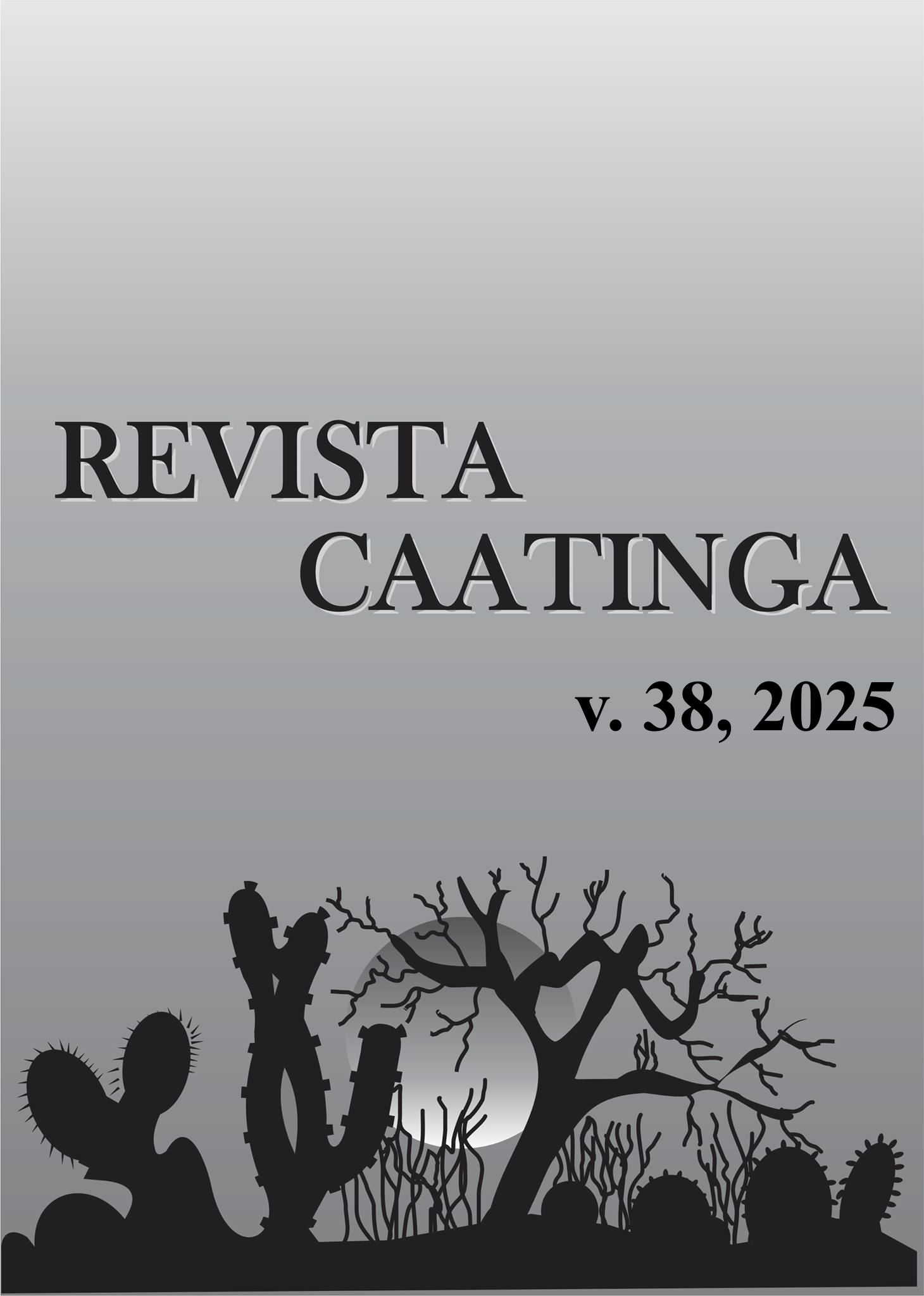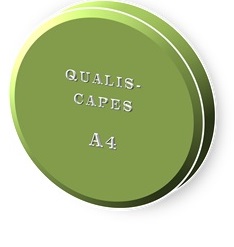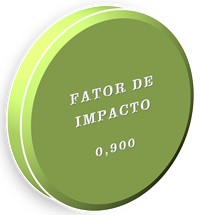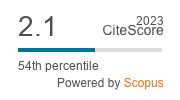Desempenho fotossintético em manga ‘Keitt’ sob flutuações ambientais diurnas
DOI:
https://doi.org/10.1590/1983-21252025v3813945rcPalavras-chave:
Mangifera indica. Estresses abióticos. Fotossíntese. Dano fotoinibitório. Plasticidade fenotípica.Resumo
Fatores abióticos, como temperatura e irradiância, induzem diferentes respostas fisiológicas nas plantas ao longo do dia. Em árvores frutíferas, condições climáticas desfavoráveis afetam a assimilação líquida de CO2 e a qualidade dos frutos. Portanto, os objetivos deste estudo foram avaliar o comportamento fotossintético da mangueira (Mangifera indica L.) cv. 'Keitt' ao longo do dia por meio da análise de trocas gasosas e fluorescência da clorofila a, determinar a predominância dos fatores abióticos (temperatura, umidade relativa e radiação) sobre essas respostas fisiológicas, e identificar a densidade de fluxo de fótons fotossinteticamente ativos (DFFFA) que promove maior assimilação de CO₂ e taxa de transporte de elétrons. O experimento foi conduzido em casa de vegetação em delineamento experimental inteiramente casualizado, no qual 18 diferentes densidades de fluxo de fótons fotossinteticamente ativos (DFFFA) (0 – 2000 μmol m-2 s-1) foram testadas em três horários diferentes ao longo do dia (8h, 12h e 16h). Cada combinação de densidade de fluxo e tempo foi repetida seis vezes, e em cada repetição, duas plantas por parcela foram consideradas. Variáveis ecofisiológicas (taxa líquida de fotossíntese, condutância estomática, transpiração e concentração interna de CO2) e ambientais (temperatura, umidade relativa e radiação fotossinteticamente ativa) foram analisadas. As trocas gasosas e a fluorescência da clorofila da manga cv. 'Keitt' foram afetadas negativamente por condições de alta temperatura e radiação fotossinteticamente ativa. O DFFFA na faixa entre 1600 e 2000 μmol m-2 s-1 proporcionou uma maior taxa de fotossíntese líquida e taxa de transporte de elétrons na manga cv. 'Keitt' às 8h.
Downloads
Referências
ALVARES, C. A. et al. Köppen’s climate classification map for Brazil. Meteorologische Zeitschrift, 22: 711-728, 2013.
BACELAR, E. et al. Impacts of climate change and mitigation strategies for some abiotic and biotic constraints influencing fruit growth and quality. Plants, 13: 1942, 2024.
BATISTA, R. D. C. M. et al. Growth, gas exchange and essential oil production of Mentha spicata L. under water deficiency. Pesquisa Agropecuária Tropical, 53: 76893, 2024.
DIDARAN, F. et al. The mechanisms of photoinhibition and repair in plants under high light conditions and interplay with abiotic stressors. Journal of Photochemistry and Photobiology B: Biology, 259: 113004, 2024.
HOČEVAR, K.; VULETA, A.; MANITAŠEVIĆ JOVANOVIĆ, S. Plastic responses of Iris pumila functional and mechanistic leaf traits to experimental warming. Plants, 14: 960, 2025.
JAHAN, M. S. et al. Melatonin-mediated photosynthetic performance of tomato seedlings under high-temperature stress. Plant Physiology and Biochemistry, 167: 309-320, 2021.
JIANG, J. Y. et al. Photosystem II efficiency in response to diurnal and seasonal variations in photon flux density and air temperature for green, yellow-green, and purple-leaved cultivars of sweet potato [Ipomoea batatas (L.) Lam]. Photosynthetica, 62: 116, 2024.
KHAN, I. et al. Adaptive responses of plants to light stress: mechanisms of photoprotection and acclimation. A review. Frontiers in Plant Science, 16: 1550125, 2025.
KISHORE, K. et al. Influence of canopy architecture on photosynthetic parameters and fruit quality of mango in tropical region of India. Horticulture, Environment, and Biotechnology, 64: 557-569, 2023.
KOSTAKI, K. I. et al. Guard cells integrate light and temperature signals to control stomatal aperture. Plant Physiology, 182: 1404-1419, 2020.
LAHAK, M. et al. Covering young avocado ‘Hass’ trees with high-density shading nets during the winter mitigates frost damage and improves tree performance. Trees, 38: 327-338, 2024.
LEBAKA, V. R. et al. Nutritional composition and bioactive compounds in three different parts of mango fruit. International Journal of Environmental Research and Public Health, 18: 1-20, 2021.
LIU, Q. et al. Optimizing photosynthetic photon flux density and light quality for maximizing space use efficacy in edamame at the vegetative growth stage. Frontiers in Sustainable Food Systems, 8: 1407359, 2024.
MOUSTAKAS, M.; CALATAYUD, Á.; GUIDI, L. Chlorophyll fluorescence imaging analysis in biotic and abiotic stress. Frontiers in Plant Science, 12: 658500, 2021.
MURTHY, H. N. et al. Light as an elicitor for enhanced production of secondary metabolites in plant cell, tissue, and organ cultures. Plant Growth Regulation, 104: 31-49, 2024.
PENG, C. et al. Insights into leaf morphology, photosynthetic efficiency, and light adaptation in cigar tobacco as light intensity transitions: A comprehensive analysis of transcriptomic, hormonal, and physiological responses. Industrial Crops and Products, 230: 121087, 2025.
PIEPER, J. R. et al. Rootstock vigor dictates the canopy light environment that regulates metabolite profile and internal fruit quality development in peach. Plant Physiology and Biochemistry, 208: 108449, 2024.
PROUTSOS, N. D. et al. Atmospheric factors affecting global solar and photosynthetically active radiation relationship in a Mediterranean forest site. Atmosphere, 13: 1207, 2022.
PSHYBYTKO, N. L. Redox state of photosynthetic ferredoxin under heat and light stress. Journal of Applied Spectroscopy, 91: 342-348, 2024.
QIU, Q. et al. Heat Stress Downregulates Photosystem I Redox State on Leaf Photosynthesis in Grapevine. Agronomy, 15: 948, 2025.
R DEVELOPMENT CORE TEAM. R: a language and environment for statistical computing. Vienna: R Foundation for Statistical Computing, 2023.
RIBEIRO, J. E. et al. Seasonal variation in gas exchange by plants of Erythroxylum simonis Plowman. Acta Botanica Brasilica, 32: 287-296, 2018.
ROYCHOWDHURY, R. et al. Multi-omics pipeline and omics-integration approach to decipher plant’s abiotic stress tolerance responses. Genes, 14: 1281, 2023.
SWOCZYNA, T. et al. Environmental stress what can we learn from chlorophyll a fluorescence analysis in woody plants? A review. Frontiers in Plant Science, 13: 1048582, 2022.
TAYLOR, G.; WALTER, J.; KROMDIJK, J. Illuminating stomatal responses to red light: establishing the role of C i-dependent versus-independent mechanisms in control of stomatal behaviour. Journal of Experimental Botany, 75: 6810-6822, 2024.
TIRADO-KULIEVA, V. A. et al. Research trends on mango by-products: a literature review with bibliometric analysis. Journal of Food Measurement and Characterization, 16: 2760-2771, 2022.
TRIVEDI, P. et al. Temperature has a major effect on the cuticular wax composition of bilberry (Vaccinium myrtillus L.) fruit. Frontiers in Plant Science, 13: 980427, 2022.
WANG, G. et al. Effects of reduced chlorophyll content on photosystem functions and photosynthetic electron transport rate in rice leaves. Journal of Plant Physiology, 272: 153669, 2022.
YANG, J. et al. Light-mediated signaling and metabolic changes coordinate stomatal opening and closure. Frontiers in Plant Science, 11: 1-12, 2020.
ZHANG, Y. et al. Global quantitative synthesis of effects of biotic and abiotic factors on stemflow production in woody ecosystems. Ecohydrology, 30: 1713-1723, 2021.
Downloads
Publicado
Edição
Seção
Licença
Os Autores que publicam na Revista Caatinga concordam com os seguintes termos:
a) Os Autores mantêm os direitos autorais e concedem à revista o direito de primeira publicação, com o trabalho simultaneamente licenciado sob a Licença Creative Commons do tipo atribuição CC-BY, para todo o conteúdo do periódico, exceto onde estiver identificado, que permite o compartilhamento do trabalho com reconhecimento da autoria e publicação inicial nesta revista, sem fins comerciais.
b) Os Autores têm autorização para distribuição não-exclusiva da versão do trabalho publicada nesta revista (ex.: publicar em repositório institucional ou como capítulo de livro), com reconhecimento de autoria e publicação inicial nesta revista.
c) Os Autores têm permissão e são estimulados a publicar e distribuir seu trabalho online (ex.: em repositórios institucionais ou na sua página pessoal) a qualquer ponto antes ou durante o processo editorial, já que isso pode gerar alterações produtivas, bem como aumentar o impacto e a citação do trabalho publicado (Veja O Efeito do Acesso Livre).







